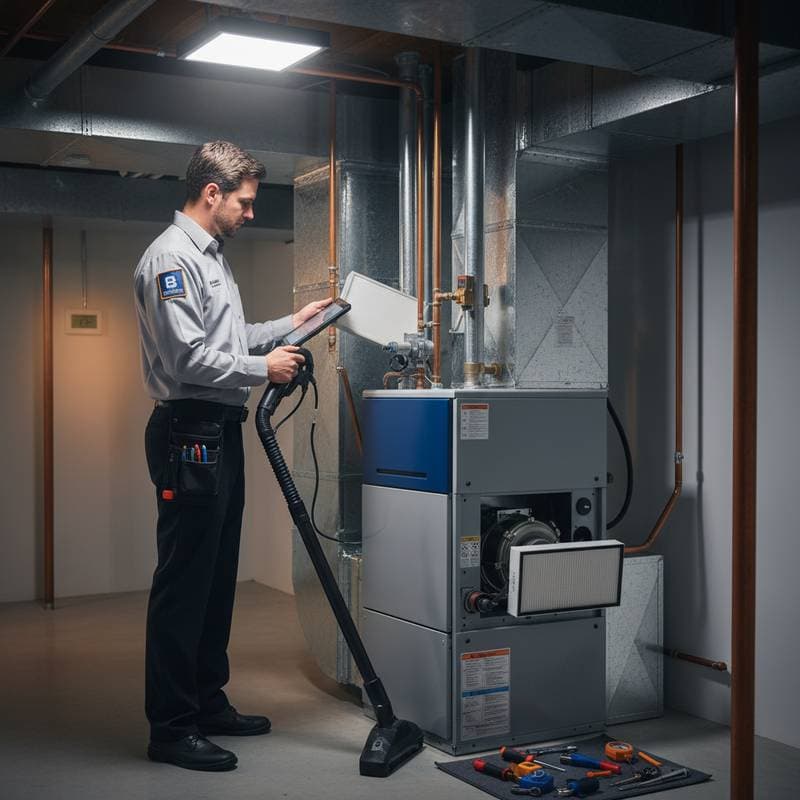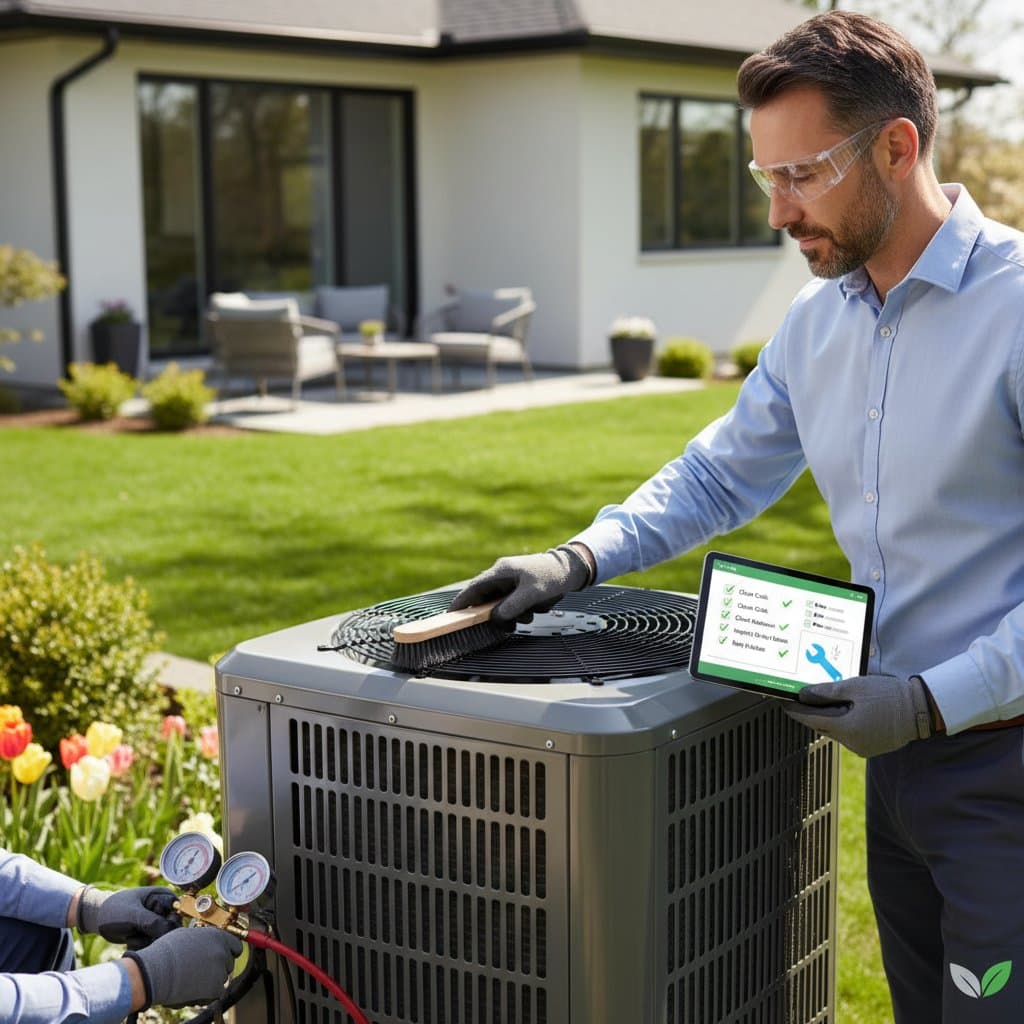Beat Winter Rush: Essential Fall HVAC Tune-Up Tips
A furnace that fails on the first cold night represents every homeowner's nightmare. Fall provides the ideal opportunity to schedule a complete HVAC tune-up before the winter rush commences. When temperatures drop, heating technicians become booked quickly, and delays in repairs can leave residents shivering. Proactive maintenance ahead of the crowd delivers peace of mind, reduced energy bills, and consistent warmth throughout the season.
This guide outlines the essential steps, tools, and expert recommendations for a fall HVAC tune-up. Homeowners can address basic maintenance independently or hire a professional for comprehensive service. These strategies safeguard the system investment and prevent expensive winter disruptions.
Step-by-Step Fall HVAC Tune-Up Checklist
Effective tune-ups integrate homeowner tasks with expert evaluations. The following sections detail how to execute each phase safely and efficiently.
1. Replace or Clean Air Filters
Dirty air filters impede airflow and overburden the system. Homeowners should replace disposable filters or clean reusable ones every one to three months. Standard filters typically measure 16 x 20 inches or 20 x 25 inches; verify the precise dimensions on the furnace access panel.
- Minimum efficiency: MERV 8
- Ideal for most residences: MERV 11 to 13
- Required tools: Screwdriver, vacuum cleaner, replacement filter
Higher MERV ratings trap smaller particles like dust and allergens. Ratings above 13 may restrict airflow in systems not equipped for them.
2. Inspect the Thermostat
Verify that the thermostat displays accurate readings. Switch it to heating mode and raise the temperature setting by several degrees. If the furnace does not activate within one or two minutes, examine the batteries, circuit breaker, or wiring.
Programmable or smart thermostats can reduce annual heating expenses by up to 10 percent through optimized schedules.
3. Clean Furnace Burners and Blower
Accumulated dust within the furnace cabinet obstructs airflow and risks overheating. Shut off power at the breaker panel prior to any cleaning. Employ a soft brush and vacuum to remove debris from blower fan blades and the burner area.
For gas furnaces, observe the flame color during operation; a steady blue flame signifies proper combustion. A yellow flame suggests incomplete burning and demands professional intervention.
4. Check the Condensate Drain Line
High-efficiency furnaces and heat pumps generate condensation that exits via a narrow plastic tube. Clogs from algae or debris often develop over time. Disconnect the tube and flush it with a solution of one cup vinegar and one cup warm water.
Reconnect the line firmly and confirm it angles downward to the drain point.
5. Examine Ductwork and Vents
Leaky ducts waste up to 30 percent of heated air. Inspect all supply and return vents throughout the home to ensure they remain open and free from obstructions like furniture. In attics or basements, review duct connections for visible gaps.
Apply UL 181-rated foil tape to seal small leaks; avoid standard duct tape, which deteriorates and loses adhesion rapidly.
6. Lubricate Moving Parts
Blower motors and bearings in older furnaces require periodic lubrication. Introduce a few drops of non-detergent motor oil into designated ports. Sealed units in modern systems demand no such maintenance; consult the owner's manual for specifics.
7. Test Carbon Monoxide Detectors
Residences with gas or oil furnaces need carbon monoxide detectors positioned within 10 feet of each bedroom. Install fresh batteries and activate the test function to verify audible alerts. This odorless gas poses severe risks, making routine testing a critical safety measure.
When to Call a Professional
Homeowner efforts handle routine cleaning and visual checks, yet professionals conduct advanced diagnostics with specialized equipment.
Professional services encompass:
- Ignition and flame sensor testing
- Gas pressure and airflow measurements
- Heat exchanger crack inspections
- Electrical connection and amperage evaluations
- Thermostat calibration
Technicians also assess refrigerant levels in heat pumps and clean evaporator coils, procedures unsuitable for non-experts. For furnaces over 10 years old or exhibiting short cycling, request a combustion analysis to confirm efficient and safe fuel use.
Cost and Energy Savings
Properly maintained furnaces achieve their rated efficiency levels. A unit with 90 percent AFUE may decline to 80 percent without care, resulting in 100 to 200 dollars in additional seasonal costs for a typical home.
Standard tune-up expenses include:
- Gas furnace: 100 to 200 dollars
- Heat pump: 150 to 250 dollars
- Oil furnace: 150 to 300 dollars
These fees cover thorough cleaning, testing, and safety verifications. Optional enhancements like duct sealing or premium filters elevate costs but yield substantial long-term reductions in energy use.
Preparing for the Unexpected
Thorough tune-ups minimize risks, yet components may fail under prolonged demand. Assemble an emergency kit near the furnace containing:
- Extra air filters
- Flashlight with spare batteries
- Contact details for a reliable HVAC service
- Carbon monoxide detector instructions
- Portable space heater for temporary relief
Schedule Your Tune-Up Today
Fall maintenance ensures reliable performance when winter demands peak from your HVAC system. Act now to secure professional availability, optimize efficiency, and enjoy uninterrupted comfort. These steps transform potential headaches into seamless seasonal transitions.





